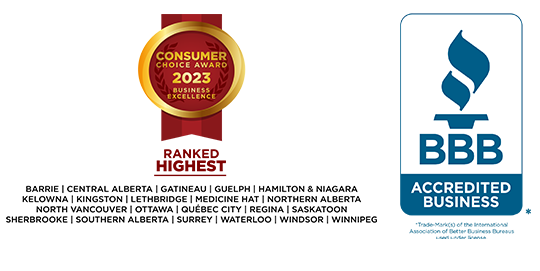What’s the difference between secured and unsecured debt?
Debt is a financial tool. And like any tool, it comes in many different shapes and sizes to fit its purpose. While the average toolbox might have a range of hammers, screwdrivers, drills and saws, the typical debt portfolio will include several forms of secured and unsecured debts.

What is secured debt?
Securing a debt means you agree to surrender ownership of an asset if you cannot or do not make the monthly payments. Generally, this is the asset you financed with debt, such as a house or car.
Secured debts are typically for large amounts you repay over several years or even decades. Given the high value of the debt, the lender is taking on a greater risk in lending to you. Security helps offset the risk because the lender can sell the item and recover their losses if you do not repay. The good news is this often means a much lower interest rate.
Collateral is another term you may commonly hear associated with secured debts. Collateral is the item you agree to surrender if you do not repay your debt. It is the same thing as security.
What is unsecured debt?
As you might expect, unsecured debt is any loan or credit agreement where you do not pledge any property as collateral. The lender may initiate collections action against you if you fail to repay your debts. However, they will not have a legal claim to your house, car, or anything else you own.
Unsecured debts tend to be for lower amounts and shorter timeframes than secured debts. Lenders tend to charge higher interest rates because there is no property to offset their risk — sometimes much higher, as with many credit cards.
How do I know if my debt is secured or unsecured?
Sometimes whether a debt is secured or unsecured is obvious. There's no question that the earlier examples of a home purchase (mortgage) or new auto financing are secured debts. But did you know a home equity line of credit (HELOC) is secured debt? As are some types of credit cards.
Lenders must specify the terms of any credit product in the loan agreement. Read your contract carefully; if your debt is secured, it will outline what you agree to surrender as collateral. Don’t be afraid to ask if you're unsure.
Following are some examples of secured and unsecured debts:
Secured debts
- Mortgage
- New auto financing
- Home equity line of credit
- Home equity loan
- Secured credit card
- Personal loans (where security is required)
Unsecured debts
- (Most) credit cards
- Personal lines of credit
- Personal loans
- Student loans
- Mobile and utility bills
- Tax debt
How does security impact my debt repayment plans?
It’s common to wonder which lenders you should prioritize, especially if you’re struggling to repay your debts. Your instinct might be to prioritize the secured lender, but this may not be the most cost-effective approach. Recall that secured debts tend to spread lower interest rates over a longer timeframe — while unsecured debts tend to have higher interest rates and shorter terms. That means the longer it takes to repay an unsecured debt, the (significantly) more you'll pay.
Missing a payment is not an option.
It’s a different story if you’re likely to miss a payment. If you do not pay a secured lender, they can repossess your property. To make matters worse, they can also seek a judgement against you if the proceeds from selling the property don’t cover the amount of your outstanding debt.
With that said, missing (or nearly missing) payments is usually a sign of a much bigger issue — and you almost certainly have better options available. Contact a Licensed Insolvency Trustee at the first sign of difficulty to discuss the solutions that might be available.
How does security affect a Bankruptcy or Consumer Proposal?
You can include both secured and unsecured debts in a Personal Bankruptcy. The process may require you to surrender certain assets for the benefit of your creditors, just as you would if you failed to repay a secured loan. However, unlike defaulting, the lender cannot seek a judgement for any shortfall they fail to recover. As long as you meet all the requirements, your debts will be cleared once the Bankruptcy is over.
On the other hand, a Consumer Proposal can only address your unsecured debts. You may keep your assets (though many opt to sell assets to fund their settlement), but you will likely have to close all your credit cards and lines of credit. You may keep your secured debts, provided the payments fit your budget.
In summary:
- Secured debt means you agree to surrender ownership of an asset if you cannot make your monthly payments. These loans tend to have lower interest rates and longer repayment timelines.
- Unsecured debt means lenders do not have a claim to any property if you do not make your monthly payments. Lenders can still take steps to collect, including seeking a court judgement for the amount owing.
- Read credit contracts carefully; lenders must specify whether the loan is secured or unsecured and the property you pledge for security.
- Personal Bankruptcy can provide relief from both secured and unsecured debt.
- Consumer Proposals only provide relief from secured debt. You can keep your secured debts if you can afford the payments.

